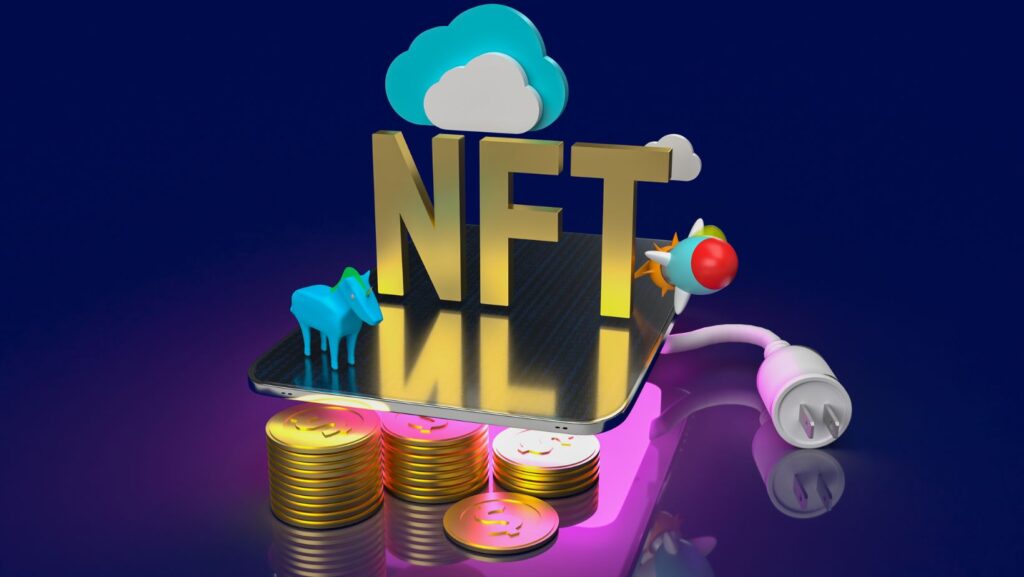The digital asset market has grown at a staggering pace — the global NFT market was valued at over $16 billion in 2024, and blockchain-based gaming alone accounts for nearly 40% of total NFT transactions. As the industry advances, liquidity aggregation across decentralized markets and trading platforms has become increasingly important, developing the new token standards.
Enter SFTs, or Semi-Fungible Tokens — a new class of blockchain assets designed to bridge the gap between fungible tokens (like cryptocurrencies) and non-fungible tokens (like digital collectibles). From digital art collections such as Beeple’s $69 million “Everydays: The First 5000 Days” to virtual real estate in metaverse platforms like Decentraland and The Sandbox, NFTs have unlocked new economic opportunities.
They’ve also extended into music and sports, with artists like Kings of Leon releasing albums as NFTs and the NBA’s Top Shot platform turning game highlights into collectible moments. These innovations allow creators to reach global audiences directly, bypassing traditional gatekeepers, while collectors gain access to provably rare, tradable, and one-of-a-kind digital assets.
What are Semi-Fungible Tokens or SFTs?
A Semi-Fungible Token or SFT starts its life as a fungible asset — interchangeable with others of the same type — but later transforms into a non-fungible one once it’s used or redeemed. This dual nature gives SFTs unique versatility across digital ecosystems.
For example, imagine a gaming platform where players purchase in-game event tickets represented by SFTs. Before the event, all tickets are identical and tradeable (fungible). After the event takes place, each ticket converts into a non-fungible digital collectible — a unique proof of attendance or reward badge. This transformation showcases how SFTs merge the practicality of fungible tokens with the individuality of NFTs.
This dynamic is made possible through the ERC-1155 token standard on Ethereum, which allows a single smart contract to manage both fungible and non-fungible tokens efficiently — reducing transaction costs and simplifying asset management for developers.
How SFTs Differ from NFTs
While both SFTs and NFTs operate on blockchain technology, they serve distinct purposes and behave differently in practice. Here are the key differences:
Uniqueness
NFTs are always unique — each token represents a one-of-a-kind asset that cannot be exchanged on a one-to-one basis with another.
SFTs, on the other hand, begin as identical and interchangeable tokens (fungible) and later become unique once they’re used, redeemed, or transformed through a specific event.
Use cases
NFTs are typically used for digital art, collectibles, and identity assets, where uniqueness and provenance matter most.
SFTs are ideal for gaming items, event tickets, or vouchers, where assets start identical but can later carry unique properties or histories.
Token standards
NFTs are built on standards like ERC-721 or ERC-998, each representing a single, distinct token.
SFTs are based on the ERC-1155 standard, which allows both fungible and non-fungible tokens to coexist within a single smart contract — reducing costs and improving efficiency.
Liquidity
NFTs tend to have lower liquidity because each one is unique and must be traded individually.
SFTs offer greater liquidity and cost efficiency, allowing batch transfers and simplified asset management before they become unique.
Lifecycle
An NFT’s value and identity are fixed from the moment it’s created.
An SFT has a two-phase lifecycle — starting as a fungible token and later transforming into a non-fungible one, providing more flexibility and dynamic use within digital ecosystems.
The Future of SFTs
As blockchain adoption grows, SFTs are expected to play a pivotal role in sectors like gaming, event management, digital identity, and tokenized assets. Their ability to combine scalability, efficiency, and uniqueness makes them especially appealing for projects looking to offer dynamic digital experiences without compromising ownership or interoperability.
In many ways, SFTs represent the natural evolution of NFTs — not replacing them, but expanding what’s possible in the world of programmable digital assets.
Looking ahead, SFTs could become a foundation for Web3 economies, powering ecosystems where assets can seamlessly change states, gain new attributes, or evolve with user interaction. For example, a loyalty token could begin as a fungible point and later transform into a unique NFT badge or membership pass. As more industries explore blockchain integration, the flexible nature of SFTs positions them to redefine digital ownership, engagement, and value creation across virtual and real-world applications.


More Stories
Bitclassic.org: A Comprehensive Review of Features and User Experience
Understanding BitClassic.org: The Future of Digital Transactions?
The Evolution of Gaming: Genres That Emerged Recently